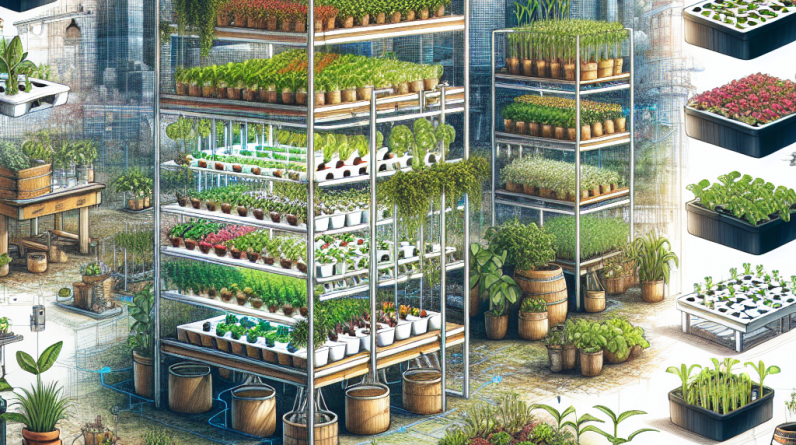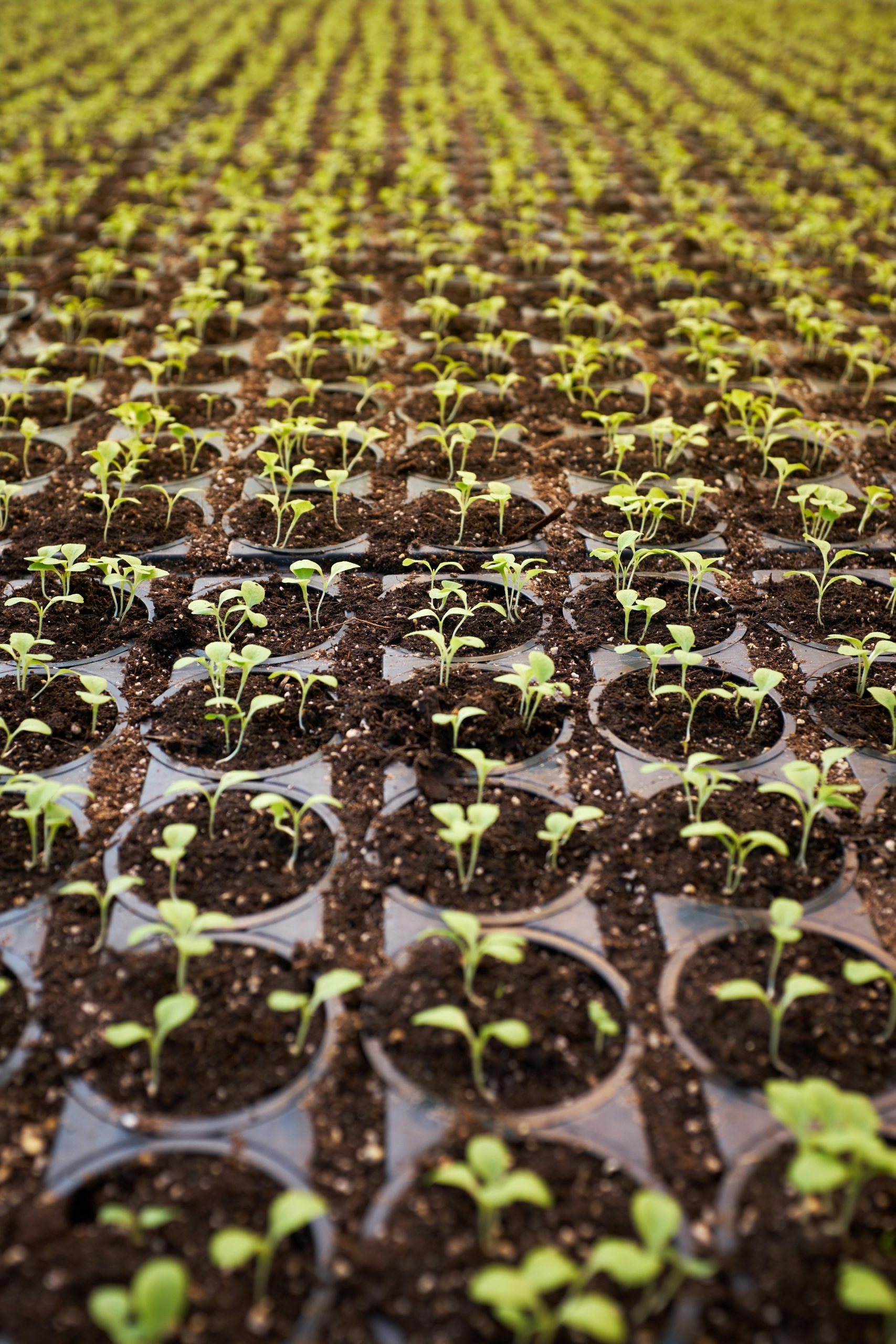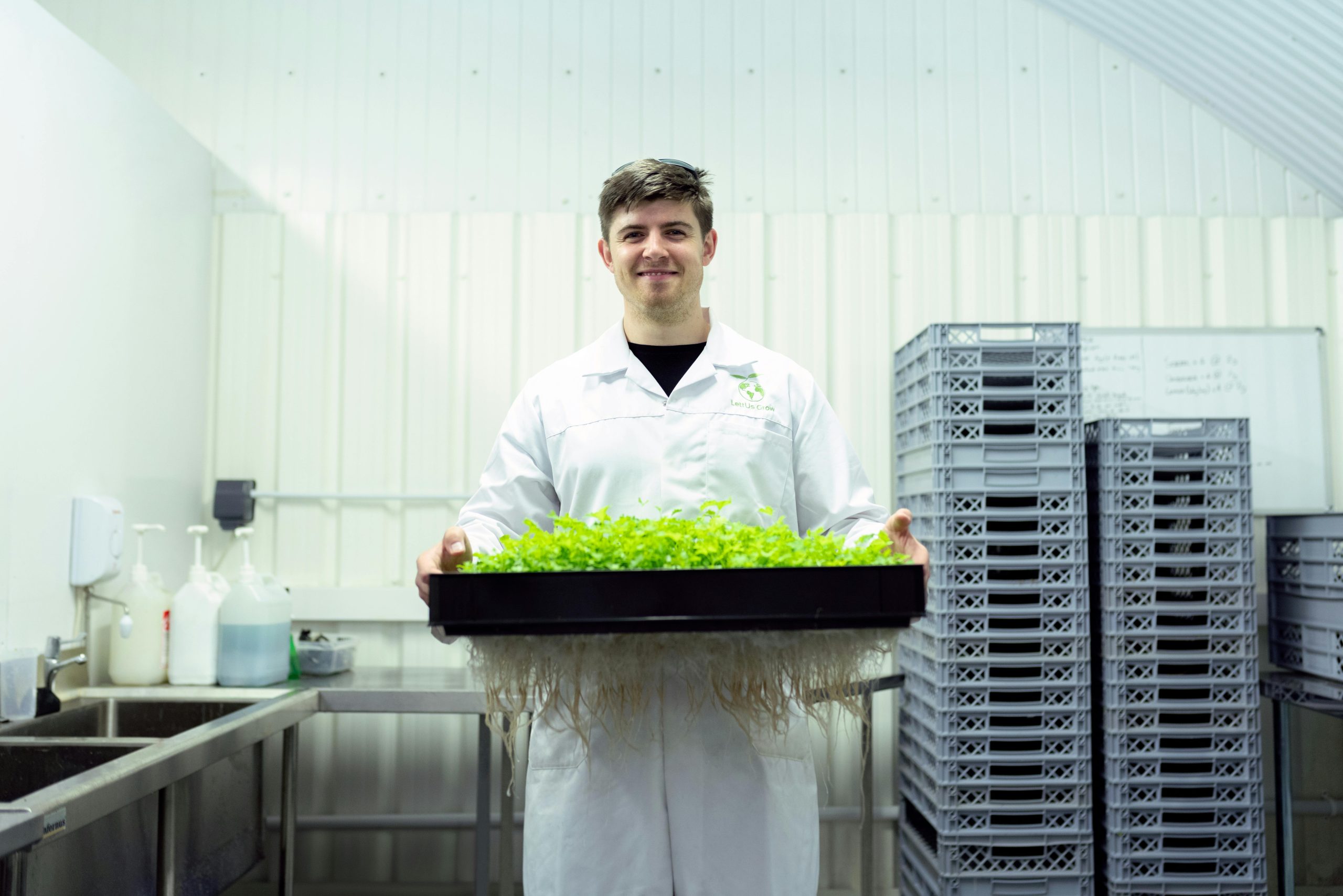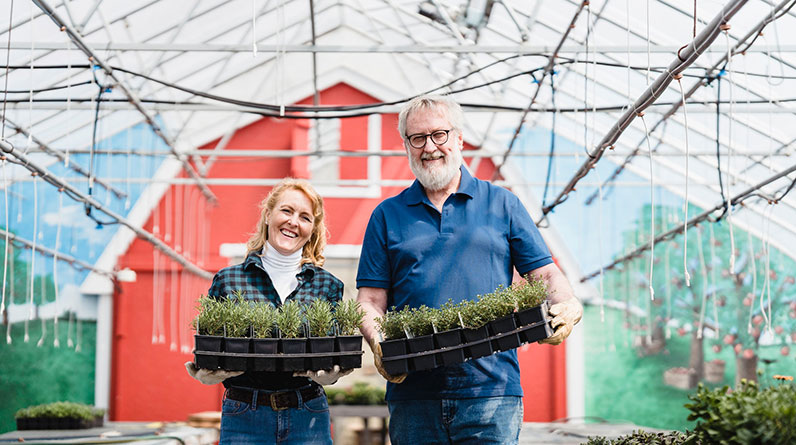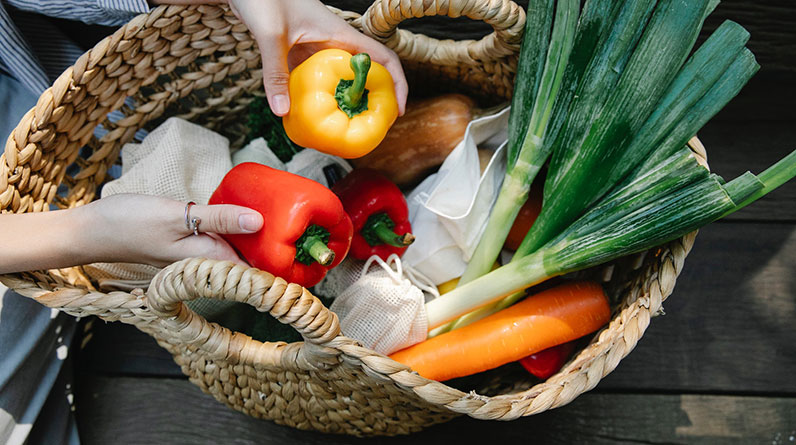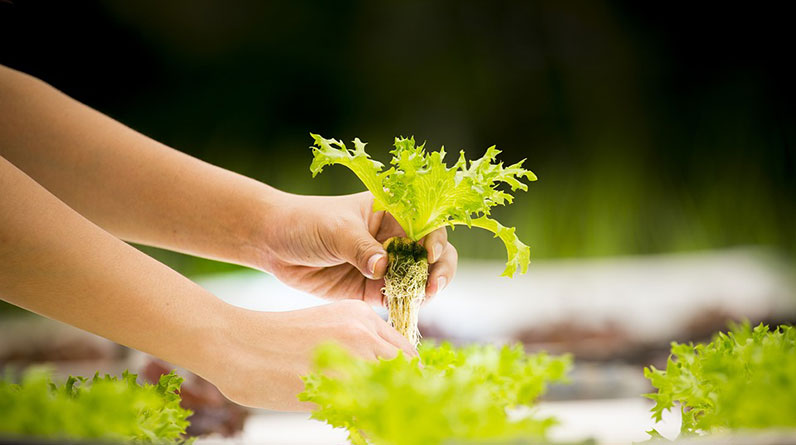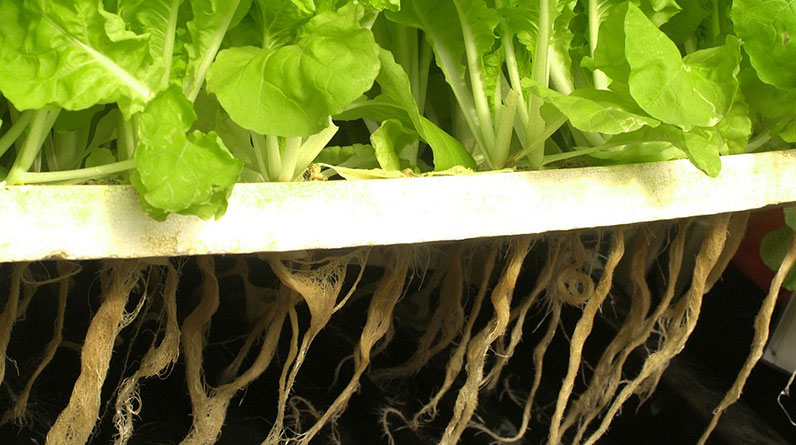
Hydroponic gardening is a method of growing plants without soil. Instead, the plants are grown in a nutrient-rich water solution. This type of gardening is becoming increasingly popular, as it requires less space and less maintenance than traditional gardening. Hydroponic gardening also produces larger yields in a shorter amount of time than soil-based gardening.
To get started with hydroponic gardening, you need to create the right environment for your plants. This includes choosing the right type of hydroponic system, setting up the necessary lighting, and selecting the right nutrients for your plants. Once you have the right environment set up, you can begin planting and growing your plants. With a little bit of care and attention, you can successfully grow nutritious vegetables and fruits in a hydroponic garden.
Are you looking for a way to cultivate plants indoors all year round without soil? Hydroponic gardening could be the answer. It is a great choice for any environment and takes up to 99% less space than conventional methods, freeing up space for other activities.
Using water as a medium, hydroponic gardens provide plants with the necessary nutrients they need to grow by bypassing the need for soil. This eliminates evaporation and improves the efficiency of nutrient absorption, ensuring the plants get the most out of what is provided.
What Supplies Are Required for Hydroponic Growing?
Hydroponic gardening is a type of gardening that involves growing plants without the use of soil. To do this successfully, you must have the right equipment. This includes a material to act as a base for the plants, such as perlite or vermiculite, a container to hold the water and nutrients, grow lights to provide light for the plants, and nutrients to give the plants the nourishment they need. With all of these components, hydroponic gardening can be a successful way to grow plants.
Substrates are materials that provide the necessary support for a plant’s root system, and allow for the absorption of water, nutrients, and air from a reservoir. Examples of widely used substrates are clay aggregate, coir peat, perlite, sand, gravel, and wood fiber.
When selecting a hydroponic system, there are a number of substrates available for consideration. Choose a substrate that is lightweight, capable of absorbing the highest amount of nutrients, and free from any hazardous or toxic chemicals.
In order to give plants the oxygen they need to thrive, a hydroponic system may require an air stone and a pump. The air stone works by creating tiny bubbles that disperse oxygen in the water, while the pump then pushes those bubbles up towards the roots of the plants. This combination of air stone and pump allows the plants to get the oxygen they need to stay healthy.
For optimal results, it is recommended to select a black or opaque container for your nutrient-rich water basin. This is because the darkness of the container prevents the growth of algae. Additionally, ensure that the container is large enough to hold an adequate amount of water.
Hydroponic systems often use a submersible pump to move water and nutrients from the container to the tray and medium. A timer is a great asset to have, as it gives you the ability to regulate watering and nutrient delivery for your specific plants’ needs.
Hydroponic gardening is a form of gardening that does not require soil. Instead, plants are grown in a nutrient-rich solution of water and fertilizer. The roots of the plants are suspended in the solution and exposed to oxygen, allowing them to absorb the nutrients they need. This type of gardening is often used in greenhouses, where the environment can be easily controlled. It is a great way to produce a large number of plants in a small space with minimal effort.
Hydroponic gardening is a unique cultivation technique that uses nutrient-rich water to facilitate the growth of plants. Unlike traditional gardening, this method allows the nutrients to be dissolved in water, making it easier for plants to absorb them.
This technique enables you to cultivate herbs and leafy greens indoors all year round without dirt. In addition, this technique is also highly effective for tomatoes, peppers, and other types of fruits.
When deciding on a hydroponic system, there are diverse possibilities. The simplest one is the wick system which calls for a reservoir, a tray for the plants, and a wick linking the nutrient-water solution.
The nutrient film technique is a type of hydroponic system in which plants are grown in a tray above a reservoir of nutrient-rich water. A pump circulates the water over the plants, providing them with a continuous supply of dissolved essential nutrients. The plants are angled in the tray so that the water can flow over them and easily be returned to the reservoir.
Aeroponics is a more advanced form of hydroponic gardening. With this method, plants are grown in a tray and their roots are continuously sprayed with a nutrient-rich solution, which is delivered through specialized pumps and misters. If these components don’t work properly, the roots will not receive the necessary nutrients and moisture and the plants will die.
No matter which type of hydroponic system you select, there are five key elements that need to be managed for successful gardening: lighting, water, nutrients, air, and pH balance. Adhering to these variables diligently is essential for a thriving hydroponic garden; making sure everything is within the optimal range will ensure a bountiful yield every time.
Tips to Successful Hydroponic Gardening
To be successful at hydroponic gardening, it is important to understand the fundamentals of the process. Here are some tips to help you get started:
1. Make sure you have well-circulated air and proper lighting. Proper air circulation and lighting will ensure the growth of your plants.
2. Ensure that the water and nutrients are well-balanced. An adequate supply of nutrients, along with the right pH balance, is essential for healthy plant growth.
3. Make sure your system is properly maintained. Regular maintenance is key for keeping your hydroponic system running smoothly. Ensure your reservoirs and pumps are clean and functioning properly.
4. Monitor your plants regularly. Keeping a close eye on your plants will help you identify problems early on, allowing you to address them quickly.
5. Be patient. Hydroponic gardening takes time and dedication, so don’t expect overnight results.
By following these tips, you can ensure you get the best results from your hydroponic garden. It is important to understand the fundamentals of the process, provide proper air circulation and lighting, maintain balanced water and nutrient levels, keep your system properly maintained, monitor your plants regularly, and be patient with the process. With these tips, you can ensure a successful hydroponic gardening experience.
Success with Your Plants
To be successful with hydroponic gardening, it is important to understand the needs of the plants you will be growing. You should purchase a nutrient-rich fertilizer that is suitable for the plants you are going to cultivate. Research which type of fertilizer works best for your plants, and then make sure to have it on hand, both in liquid and solid form.
To ensure that your plants are successful in a hydroponic system, it is important to periodically test the pH of your nutrient solution. A pH level that is too high or too low can be dangerous for your plants, so it is essential to make sure the pH is in the correct range. You can use a pH strip or meter to determine the pH of your water solution and then adjust it if necessary.
It is important to make sure the water used to water plants is not too cold or too hot. The ideal temperature of the water should be between 68 and 72 degrees Fahrenheit. This temperature range will ensure that the roots of the plants receive enough oxygen to stay healthy.
To keep your reservoir clean, regularly remove some of the water and replace it with fresh water. This is especially important if you have a drip irrigation system, as the water needs to be changed more frequently. Doing this helps keep your reservoir clean and your plants healthy.
By replacing part of your tank’s water every couple of weeks, you can help prevent clogging and promote healthy plant growth. This will ensure that nutrients are being circulated properly, and that your plants get the sustenance they need.
Hydroponic gardening is a great way to cultivate plants without relying on soil, making it an eco-friendly and space-saving choice. It is a great option for those who have limited outdoor space and still want to enjoy the benefits of growing their own organic produce. Additionally, you won’t need to use as many fertilizers and pesticides since plants can get the nutrients they need from the water.
Cost Factors with Hydroponic Gardening
Hydroponic gardening is a type of gardening that uses nutrient-rich water rather than soil to grow plants. While it is a more efficient way to grow plants, it can be expensive to get started.
Before making the decision to use a hydroponic system, it is important to consider the costs associated with purchasing and maintaining the necessary equipment. These costs include the purchase of the hydroponic system, the containers, the pumps, the timer, the nutrients, and the water. Additionally, regular maintenance and replacement of the system components may be necessary. Therefore, it is important to factor in these cost considerations when deciding if hydroponic gardening is the right choice for you.
Hydroponic gardening is an economical and time-efficient substitute for traditional gardening with soil. It requires substantially less water and uses liquid nutrients and pH adjusters in place of fertilizer, soil, and mulch.
This system allows us to reuse the nutrient solution over and over, drastically decreasing the amount of water needed for growing plants. By doing this, we can avoid a significant amount of water loss due to evaporation, resulting in a more efficient gardening system.
Hydroponic gardening is a method of growing plants without the need for soil. To do this, you will need to invest in materials and equipment such as pumps, tanks, and other systems. You will also need to consider the cost of training staff, ensuring quality assurance measures are in place and the cost of land or buildings to house the system. All of these factors must be taken into account before deciding to pursue hydroponic gardening.
A more extensive hydroponic system will be more expensive than a straightforward one. These systems involve more components, such as larger tanks, more powerful pumps, longer piping, and more heavy-duty materials. The cost can run up to tens of thousands of dollars or more.
When starting a hydroponic farming business, it’s important to consider the costs of land, construction materials, and electricity. Not only may the amount of the expenses vary based on the local area, but underestimating them could have a major impact on the overall success of the venture. It’s important to factor in these expenses when creating a business plan.
By investing in environmental safeguards, hydroponic farms are able to ensure their long-term success. From soil testing and organic certification, to green energy infrastructure, these measures help protect the environment while providing the necessary resources for the industry. Although the costs of implementing these safeguards may be high, they are essential for the future of the hydroponic industry.
Despite the cost of setting up and maintaining a hydroponic garden, the benefits can be great. Hydroponic gardens are able to produce more crops and yield faster growth than soil-based gardens, resulting in larger harvests.
Difficulties of Cultivating Hydroponically
Hydroponic farming can be a great way to cultivate fresh produce, especially in areas prone to drought. Although, it is not without its difficulties.
Hydroponic growers must be vigilant in their maintenance of the system by routinely flushing it and replacing the nutrient solution. Not performing these tasks can create blockages, foul smells, and harm plants if not attended to.
Algae can be a problem in hydroponic systems because it can block oxygen from reaching the roots of plants, leading to root rot. It can also block and damage parts of the system, making it difficult for the system to operate correctly.
To ensure that your plants stay healthy and happy, make sure that the soil is free of weeds, that the environment is kept insulated so that the temperature is not too high or too low, and that the temperature is suitable for the plants’ growth.
Keeping your garden tidy and free from debris is vital to keeping diseases from taking hold. Ensure that you remove any dead leaves, weeds, and other organic material that could serve as a breeding ground for bacteria and fungus. Additionally, make sure to sterilize your tools regularly, as these can spread disease from plant to plant. With a little effort, you can keep your garden healthy and productive.
It is essential to be aware of the regulations and laws which apply to hydroponic gardening. This includes laws at both the federal and state level which govern how water is used, whether there can be any uncontrolled releases, and how food safety is maintained.
These challenges may seem intimidating initially, but if you treat them seriously and are ready to devote the necessary labor and energy, they are controllable. After establishing your framework, you will find that hydroponic gardening is a satisfying and delightful pastime.
Growing plants can be quite a difficult endeavor, yet hydroponic systems make it a much simpler process for cultivating herbs and leafy greens. Even some more challenging crops can be successfully grown with the help of this method.
Related Content
- Hydroponic Farming: An Eco-Friendly Approach to Growing
- The Ultimate Guide to Hydroponics in 2025: 7 Effective Tips for Beginners
- The Ultimate Guide to 10 Effective Hydroponic Herbs Indoors in 2025
- Benefits of Hydroponic Growing Systems
- The Benefits of Year-Round Cultivation in Hydroponic Vegetable Gardening


